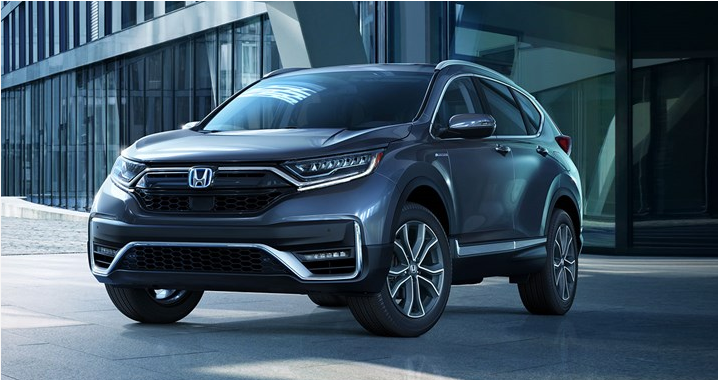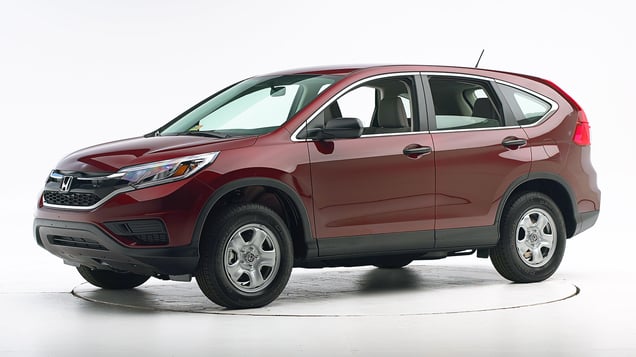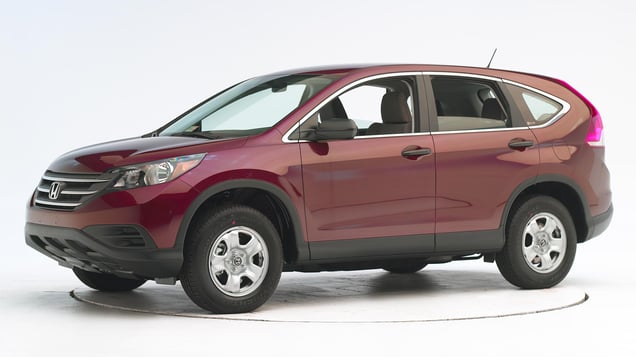Having spent years in the automotive industry, I’ve seen countless CR-Vs roll through shops and driveways. I’ve personally witnessed which models age like fine wine and which ones develop problems that make owners regret their purchase. Through hands-on experience and countless conversations with fellow technicians and long-term owners, I’ve developed a clear picture of which CR-V years truly stand the test of time.
Why I Consistently Recommend the Honda CR-V
When friends ask me what compact SUV they should buy, the CR-V is always on my shortlist. Here’s why: I’ve seen these vehicles consistently reach 200,000, 300,000, even 400,000 miles with proper care. Just last month, I serviced a 2008 model with over 380,000 miles on the original engine and transmission. The owner had followed the maintenance schedule meticulously, and the SUV still ran smoothly on its daily commute. That’s not an isolated case – I’ve observed this remarkable longevity across multiple CR-V generations, which is why I have such confidence in recommending them.
The Gold Standards: CR-V Years I’d Buy Without Hesitation

1. 2020 Honda CR-V: The Peak of Modern Engineering
I remember when the fifth-generation CR-V first launched, there were some growing pains. But by the 2020 model year, Honda had perfected the formula. In my garage, I’ve noticed a significant drop in 2020 models coming in for anything beyond routine maintenance compared to the 2017-2019 versions.
What Makes It Exceptional:
- The Oil Dilution Issue Was Solved: Earlier 1.5L turbo models sometimes had fuel mixing with engine oil, especially in cold climates. I saw this firsthand in several 2017-2018 models. By 2020, Honda’s engineering updates had effectively resolved this, making the engine as reliable as we’ve come to expect from the brand.
- The Hybrid is Brilliant: When the CR-V Hybrid arrived in 2020, I was skeptical. But after driving one and speaking with owners, I’m impressed. The seamless transition between electric and gas power, combined with incredible fuel efficiency, makes it a standout. One of my clients traded her 2015 CR-V for a 2020 Hybrid and reported getting 42 MPG in city driving – something I’d have thought impossible in an SUV this size.
- Real-World Safety: I’ve spoken with several 2020 CR-V owners who credit the Honda Sensing® system with preventing accidents. One particular story stands out – a client told me how the collision mitigation system activated faster than he could react when a car suddenly stopped ahead of him in heavy rain. That kind of real-world performance gives me confidence in recommending this model to families.

2. 2016 Honda CR-V: The Bulletproof Performer
The 2016 CR-V is what I call a “sweet spot” vehicle. In my experience, this is one of the most trouble-free model years ever produced. I maintain three 2016 CR-Vs for different clients, all with over 150,000 miles, and they’ve required little beyond routine maintenance.
Why It’s So Reliable:
- The K24 Engine is Proven: Having worked on hundreds of these engines, I can attest to their durability. The 2.4L four-cylinder in the 2016 model doesn’t have the complexity of turbochargers but delivers plenty of power for daily driving. I’ve seen these engines go 250,000 miles without major repairs when properly maintained.
- Simple Yet Effective: The 2016 model has just the right amount of technology without being overly complex. The infotainment system works intuitively, and there are fewer electronic components that could potentially fail down the road. From a repair perspective, everything is accessible and straightforward to service.
- Real Maintenance Savings: Based on my repair records, 2016 CR-V owners spend significantly less on unexpected repairs compared to many competitors. The parts are readily available and reasonably priced, which matters when you’re budgeting for long-term ownership.

3. 2013 Honda CR-V: The Budget-Friendly Champion
I often recommend the 2013 CR-V to young families or first-time buyers who need reliability on a budget. There’s a reason you still see so many of these on the road today – they’re built to last.
Why It Represents Smart Value:
- Affordable Maintenance: In my experience, maintenance costs for the 2013 CR-V are among the lowest in its class. Standard service items like brakes, batteries, and filters are inexpensive and easy to replace. I’ve helped many owners keep their maintenance costs under $500 annually, excluding routine oil changes.
- Proven Track Record: One of my clients has a 2013 CR-V with over 280,000 miles that still serves as their primary family vehicle. Besides expected wear items, they’ve only needed to replace one wheel bearing and the alternator – impressive for a vehicle with this mileage.
- Community Trust: At local car meets and through online forums, the 2013 CR-V consistently receives praise from owners. This real-world feedback from long-term users aligns perfectly with what I’ve observed in my own practice.
Model Year Comparison: What I’ve Learned From Hands-On Experience
| Model Year | Generation | From My Experience | Common Issues I’ve Fixed |
|---|---|---|---|
| 2020 | Fifth | The most refined, trouble-free modern CR-V | Mostly recalls updates, few genuine repairs |
| 2016 | Fourth | Near-perfect reliability, easy to maintain | Typical wear items only, very few surprises |
| 2013 | Fourth | Best value, astonishingly durable for age | Some AC compressor failures, minor electrical gremlins |
| 2015 | Fourth | AVOID: Transmission and engine complaints verified | Multiple transmission replacements, excessive oil consumption |
| 2017-2019 | Fifth | CAUTION: First-gen turbo growing pains | Oil dilution fixes, fuel injector replacements, electronic issues |
The Years I Consistently Advise Against
Based on the patterns I’ve observed, there are certain model years that consistently develop expensive problems:
2015 CR-V: I’ve had multiple clients with 2015 models experience transmission failure before 100,000 miles. The repair costs often exceed $4,000 – a devastating expense for owners who bought the CR-V for its reliability. The powertrain issues in this model year are widespread and well-documented in repair databases and technical service bulletins.
2017-2019 CR-V: The oil dilution problem was very real. I personally diagnosed several 2018 models where the oil level was significantly over-full due to gasoline contamination. While Honda issued recalls and extended warranties, the fundamental design issue makes me cautious about long-term reliability. One owner described the smell of gasoline from the oil fill cap that was so strong it concerned them – rightly so.
My Professional Buying Checklist
When helping friends or clients shop for a used CR-V, I always recommend:
- Get a Vehicle History Report, But Don’t Stop There: While CarFax is useful, I’ve seen clean-title vehicles with significant hidden damage. Always combine the report with a thorough inspection.
- Check for Completed Recalls: The Takata airbag recall affected millions of vehicles. I once inspected a 2014 CR-V where the previous dealer had never completed the recall work, putting the current owner at risk. Verify completion through Honda’s database.
- The “Mechanic’s Test Drive”: Beyond the typical test drive, I listen for specific sounds:
- A slight whine from the transmission in 2015 models
- Any hesitation or stumble during acceleration in 2017-2019 turbos
- Unusual suspension noises over bumps, indicating worn components
- Ask for Maintenance Records: The best indicator of future reliability is past maintenance. I’m always more confident recommending vehicles with complete service histories. One 2016 CR-V I recommended had every oil change documented at the recommended intervals – it’s now at 190,000 miles with no major issues.
The Honest Truth
No vehicle is perfect, but the best CR-V model years come remarkably close. Having worked on everything from 1997 models to the latest hybrids, I can confidently say that choosing the right model year makes all the difference. The 2020 model represents the pinnacle of modern CR-V engineering, the 2016 is arguably the most reliable overall, and the 2013 offers incredible value for budget-conscious buyers.
The pattern I’ve observed is clear: avoid first model years of new generations and focus on the refined versions that follow. Your perfect CR-V is out there – it’s just a matter of choosing the right year and having it properly inspected before you buy. Trust me, your future self will thank you for doing the research.